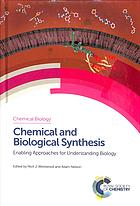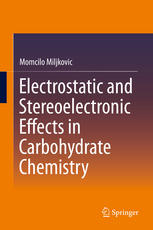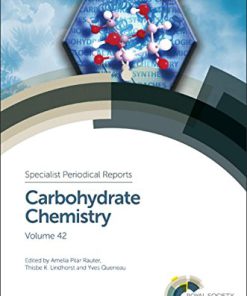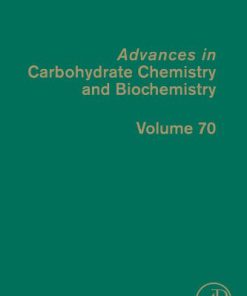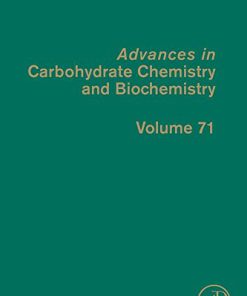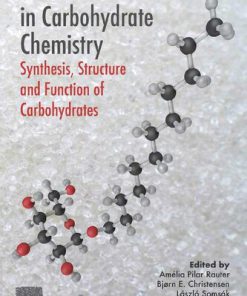Carbohydrate chemistry chemical and biological approaches Volume 44 1st Edition by Thisbe Lindhorst, Yves Queneau, Amelia Pilar Rauter ISBN 1788013867 9781788013864
$50.00 Original price was: $50.00.$25.00Current price is: $25.00.
Carbohydrate chemistry chemical and biological approaches Volume 44 1st Edition by Thisbe Lindhorst, Yves Queneau, Amélia Pilar Rauter – Ebook PDF Instant Download/Delivery: 1788013867, 9781788013864
Full download Carbohydrate chemistry chemical and biological approaches Volume 44 1st Edition after payment

Product details:
ISBN 10: 1788013867
ISBN 13: 9781788013864
Author: Thisbe Lindhorst, Yves Queneau, Amélia Pilar Rauter
The understanding of the structure and function of carbohydrates and glycoconjugates remains vital in many fields, notably in medicine and molecular biology. This new volume of Carbohydrate Chemistry contains critical reviews covering the latest findings in both chemical and biological sciences, and demonstrates the interdisciplinary nature of modern carbohydrate research. This book addresses diverse applications that continue to be major challenges for carbohydrate chemists. The oxidative deamination reactions and synthesis of N-acetylneuraminic acid derivatives, ketoheptoses, lipid A and analogs, the fascinating world of complex glycans in the interplay with Siglecs, carbohydrates and regenerative medicine, chemistry for the stereocontrol of glycosylation, and the impact of gold chemistry in carbohydrate research are some of the topics presented in this volume 44, which will certainly benefit any researcher who wishes to learn about the latest developments in the carbohydrate field.
Carbohydrate chemistry chemical and biological approaches Volume 44 1st Table of contents:
1 Introduction
2 Oxidative deamination of N-acetylneuraminic acid
2.1 Ogura’s deamination
2.2 Zbiral’s deamination
2.3 Navuluri and Crich’s deamination
2.4 Application to the synthesis of pseudaminic acid and legionaminicacid and their analogs
2.4.1 Synthesis of pseudaminic acid by Keifel, Payne and coworkers
2.4.2 Synthesis of pseudaminic acid and its glycosides by the Crichgroup
2.5 Use of thiophenols and phenols as nucleophiles
2.6 Use of hydroxylamine derivatives and aniline as nucleophiles
2.7 Mechanism of the reaction
2.7.1 Effect of protecting groups
2.7.2 Isotopic labeling studies
2.7.3 Overall mechanism
2.7.4 Mechanism of substitution at the 4-position
2.7.5 Participation from an anomeric thioether group
3 Related deamination reactions of other aminosugars
4 Application to complex substrates
5 Conclusion
Acknowledgements
References
Exploring the fascinating world of sialoglycans in the interplay with Siglecs
1 The biological importance of glycans
1.1 The heterogeneity of glycans structures
1.2 Sialic acid
2 Siglecs
2.1 Classification and structures
2.2 The specificity of Siglecs towards sialylated structures
2.3 Mechanisms of Siglec binding to sialoglycans
2.4 Discrimination of self and non self
3 Molecular basis of sialoglycans recognition by Siglecs
3.1 Sialoadhesin–Sialoglycans interactions
3.2 Siglec-2 (CD22)–Sialoglycans interactions
3.3 MAG (Siglec-4)–Sialoglycans interactions
3.4 Siglec-5–Sialoglycans interactions
3.5 Siglec-7–Sialoglycans interactions
3.6 Siglec-8–Sialoglycans interactions
3.7 Siglec-10–Sialoglycans interactions
4 Conclusions
Acknowledgements
References
Synthesis of lipid A and its analogs and conjugates
1 Introduction
2 Overall synthetic strategies for lipid A
2.1 Convergent vs. linear synthesis
2.2 Protection tactics
2.3 Introduction of lipid chains
2.4 Phosphorylation and anomeric modification
3 Synthesis of lipid A mimics
4 Enzymatic synthesis of lipid A
5 Conclusion
References
Hydrogen-bond- mediated aglycone delivery (HAD) and related methods in carbohydrate chemistry
1 Introduction
2 Concepts of the neighboring group participation and aglycone delivery in carbohydrate chemistry
3 The concept of the H-bond-mediated aglycone delivery (HAD)
4 Protecting groups for the HAD
5 Reaction conditions that favor the HAD
6 Stereocontrolled synthesis of glycosidic bonds
6.1 α-Glucosides
6.2 β-Glucosides
6.3 β-Mannosides
6.4 Furanosides
6.5 Glycosides of 2-deoxysugars
6.6 KDO glycosides and α-sialosides
6.7 Other glycosides
7 Applications of the HAD in synthesis
7.1 Glycosyl donors with switchable selectivity
7.2 Oligosaccharide synthesis
8 Evidence for HAD
8.1 Conditions and additives that disrupt H-bonding
8.2 Glycosyl acceptors that may lead to reduced stereoselectivity
8.3 Mechanistic and spectroscopic evidence for HAD
9 Conclusions and outlook
References
Formation of 2-ketoheptoses
1 Introduction
2 Syntheses of ketoheptoses by rearrangement reactions
3 Syntheses of ketoheptoses by chain elongation reactions
4 Conclusion
References
Functionalized CARB Pharmacophore (FCP) approach to thioand unsaturated carbohydrate scaffolds with
1 Introduction
2 Thio sugar motif of FCP
3 Exocyclic enones of functionalized carbohydrate derivatives
4 Conclusion and future perspectives
References
Application of computational methods for the studies of carbohydrate reactivity
1 Introduction
2 Possible role of remote O-acyl groups assistance in stereocontrol of glycosylation
3 Possible role of 1,3-syn-diaxial repulsion
4 Investigation of the pyranoside-into-furanoside rearrangement
5 Investigation of self-cyclization of 6-monohydroxylated oligo-(1→6)-glucosamine glycosyl donors
6 Conclusion
Acknowledgements
References
Recent advances in the application of NMR methodologies toanalyze the conformation, dynamics, and in
1 Introduction
2 Oligosaccharides
3 19F-NMR and carbohydrates
4 Glycomimetics
5 Glycopeptides and glycoproteins
6 Polysaccharides
7 Solid-state NMR and glycolipids
8 Defining new horizons for studying glycans and their interactions: paramagnetic NMR
9 Conclusions
Acknowledgements
References
High resolution 1H-NMR spectroscopy as a tool in disclosing the structure of O-linked glycans from g
1 Introduction
2 1H-NMR spectroscopy, structural- reporter-group concept
3 Mucin type glycans
4 Cystic fibrosis and bronchiectasis
5 Bronchiectasis due to Kartagener’s syndrome
6 Discussion
References
Strategies for developing carbohydrates as glycoside hydrolase inhibitors
1 Introduction
2 Classification of GH enzymes
2.1 Based on substrate specificity
2.2 Based on mechanistic action
2.3 Based on mode of action
2.4 Based on amino acid sequence
3 Mechanism of GH enzymes
3.1 Inversion of configuration at the anomeric position
3.2 Retention of configuration at the anomeric position
4 Strategies to design GH inhibitors
4.1 Configuration
4.2 Conformation
4.2.1 Carbasugars
4.2.2 Cyclophellitols
4.3 Charge
4.3.1 Iminosugars
4.3.2 Gluco-azoles
4.3.3 2-Deoxy-2-fluoro sugars
5 Multivalent effect
6 Conclusion
References
Recent advances on glycosphingolipid GM3
1 Introduction
2 Ganglioside GM3 and tumor cells
2.1 Ganglioside GM3 expression on tumor cells
2.2 Ganglioside GM3 and EGFR signaling pathway
2.3 Effect of ganglioside GM3 on tumor angiogenesis
2.4 Effect of ganglioside GM3 on tumor motility
3 Ganglioside GM3 and insulin resistance
4 Synthesis of ganglioside GM3 analogs
4.1 Modification of sialic acid block
4.2 Modification of lactose block
4.3 Modification of ceramide block
4.4 Synthesis of oligomeric GM3 analogs
5 Conclusion
Acknowledgements
References
Glycans and hybrid glyco-materials for artificial cell microenvironment fabrication
1 Introduction
2 The cell microenvironment, structural requirements, diversity
3 Extracellular matrix: a home-made of proteins and polysaccharides
4 Cell microenvironment role in cell fate: from cell behavior to morphogenesis
5 Artificial cell microenvironments: design and techniques
6 Glycans- functionalized biomaterials
7 Challenges and future perspectives: regenerative medicine and in vitro tumors modelling
People also search for Carbohydrate chemistry chemical and biological approaches Volume 44 1st:
carbohydrate chemistry
journal of carbohydrate chemistry
journal of carbohydrate chemistry impact factor
advances in carbohydrate chemistry and biochemistry
essentials of carbohydrate chemistry and biochemistry pdf
Tags:
Thisbe Lindhorst,Yves Queneau,Amelia Pilar Rauter,Carbohydrate chemistry,biological approaches
You may also like…
Science (General)
Biology and other natural sciences
Science (General)
Biology and other natural sciences
Science (General)
Advances in Carbohydrate Chemistry and Biochemistry 70 1st Edition Derek Horton (Eds.)
Biology and other natural sciences
Advances in Carbohydrate Chemistry and Biochemistry Volume 71 1st Edition Derek Horton
Science (General)
Advances in Carbohydrate Chemistry and Biochemistry 69 1st Edition Derek Horton (Eds.)
Science (General)






